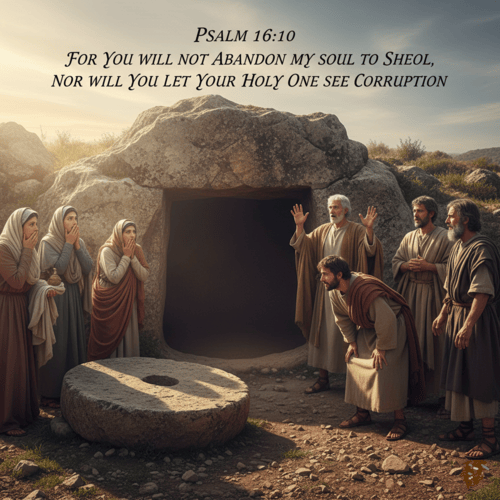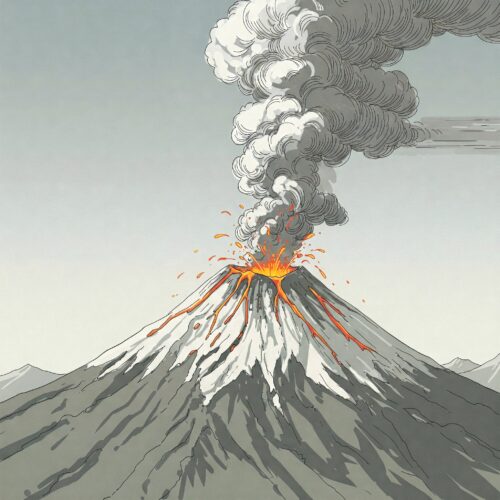Mt St Helens: How One Volcano Challenges Geological Timescales
When Mt St Helens in the US erupted on May 18, 1980, it did more than devastate the surrounding landscape—it provided a natural laboratory that has challenged fundamental assumptions about geological processes and timescales.
Rapid Formation of Sedimentary Layers
One of the most striking discoveries following the eruption was the formation of sedimentary-type layers not over millions of years, but within days:
- Up to 600 feet of finely laminated deposits formed rapidly through pyroclastic flows
- The June 12, 1980 eruption created a 25-foot thick deposit with fine laminations in a single day
- The layers strongly resemble sedimentary rocks conventionally thought to require thousands to millions of years to form
The “Little Grand Canyon”
Perhaps most impressive was the formation of a canyon system that mirrors features typically attributed to millions of years of gradual erosion:
- On March 19, 1982, a mud flow from melting snow carved through the fresh volcanic deposits
- This event created a canyon system 1/40th the scale of the Grand Canyon in less than one day
- The canyon exhibits the same layered walls, side canyons, and meandering structure seen in much older canyons
Petrified Forests Through Rapid Processes
The eruption also demonstrated how petrification processes can occur much faster than conventionally taught:
- Thousands of trees were uprooted and transported into Spirit Lake
- Many became waterlogged and sank in upright positions, creating the appearance of multiple forest layers
- This phenomenon provides an alternative explanation for petrified forests like those in Yellowstone, which are often cited as evidence for multiple forests growing over vast time periods
Coal Formation Insights
The eruption deposited vast amounts of organic material and demonstrated:
- Large quantities of plant matter can be rapidly buried under proper conditions
- The high heat and pressure conditions necessary for coal formation can exist in catastrophic scenarios
- These observations align with models suggesting coal seams could form rapidly during large-scale flooding events without requiring millions of years
Scientific Implications
The Mt St Helens events provide compelling evidence that:
- Complex geological formations don’t necessarily require vast time periods
- Catastrophic processes can explain features conventionally attributed to gradualism
- Rates of geological processes aren’t constant, but highly variable depending on conditions
CONCLUSION
Mt St Helens is a powerful reminder we should remain open to challenging established assumptions in geological sciences.
As geologist Dr. Steven Austin observed, “The present is the key to the past, but the present is much more catastrophic than many geologists have been willing to admit.”
This insight brilliantly reframes uniformitarianism—the foundational principle that present geological processes explain past formations. What Mt St Helens demonstrated is that while studying present processes indeed helps us understand Earth’s history, we must acknowledge today’s catastrophic events can accomplish in moments what conventional geology attributes to millions of years of gradual change.
When we observe the rapid formation of sedimentary layers, canyons, and other features previously thought to require vast time periods, we must consider whether our understanding of Earth’s history needs significant recalibration. Evidence from the modern eruption provides compelling support for models suggesting Earth’s major geological features could have formed through catastrophic processes within a much younger timeframe than conventionally accepted.
MT ST HELENS—RELATED FAQS
How does radiometric dating fit with the rapid formations seen at Mt St. Helens? Radiometric dating of the new lava dome at Mt St. Helens produced dates ranging from 350,000 to 2.8 million years old—for rocks we know formed in 1980. This demonstrates that radiometric dating methods can yield grossly inflated ages when their underlying assumptions (such as closed systems and known initial conditions) are violated. These findings suggest we should question radiometric dates that seem to indicate an ancient Earth.
Did Mt St. Helens only demonstrate small-scale rapid formations, or can this apply to larger geological features? While Mt St. Helens created smaller features than many found on Earth, the principles demonstrated apply at all scales. The same hydrological and geological processes that carved the 1/40-scale “Little Grand Canyon” would operate with exponentially greater force during a global catastrophe. Mathematical modelling shows that with sufficient water and energy—as would be present during a global flood—continent-scale features could form rapidly through the same mechanisms.
What about fossil layers? Can Mt St Helens explain those too? Mt St. Helens demonstrated how catastrophic events can rapidly sort and deposit materials in distinct layers. Animals and plants caught in the blast were buried in sorted deposits based on size, density, and ability to escape—creating patterns similar to fossil layers. This observed sorting process challenges the conventional view that fossil layers represent different evolutionary time periods, instead suggesting they could represent different ecological zones buried in sequence during a catastrophic event.
Didn’t the Mt St Helens formations require special volcanic conditions that wouldn’t apply elsewhere? While volcanic material was involved, the fundamental processes—rapid sedimentation, catastrophic erosion, and hydraulic sorting—operate under many high-energy conditions. The pyroclastic flows demonstrated how any suspended particles, not just volcanic ones, can form finely laminated deposits under catastrophic conditions. Similar processes would occur during any large-scale catastrophe involving water and sediment, such as a global flood.
How does Mt St Helens help explain polystrate fossils? The eruption transported thousands of trees into Spirit Lake, where many became waterlogged and sank in upright positions through multiple sediment layers—creating “polystrate” formations in real-time. Conventionally, polystrate fossils (fossils crossing multiple sedimentary layers) are difficult to explain if those layers represent thousands or millions of years. Mt St. Helens demonstrated how these formations can occur rapidly during catastrophic events, without requiring the layers to represent different time periods.
Were scientists expecting these rapid formations, or did they genuinely challenge conventional understanding? Many of the rapid formation processes observed at Mount St Helens genuinely surprised geologists who’d been trained in gradualistic thinking. Scientists like Dr. Harry Glicken documented how the eruption forced reconsideration of how quickly certain geological processes can occur. These observations didn’t merely confirm what was already known, but expanded scientific understanding by demonstrating that catastrophic processes can accomplish in hours or days what was previously thought to require centuries or millennia.
How does Mt St Helens inform our understanding of Noah’s Flood? Mt St. Helens provides a small-scale, observable model for the types of geological processes that would have occurred during Noah’s Flood, but at a vastly larger scale. The eruption demonstrated rapid canyon formation, sedimentary layering, coal bed formation, and ecological sorting—all processes that would have occurred during a global flood, just exponentially larger. This natural laboratory helps us understand how a year-long global catastrophe could have produced much of Earth’s geological record rapidly, rather than over billions of years.
MT ST HELENS—OUR RELATED POSTS
Editor's Pick

Why Do People Hate the Doctrine of Election?
…WHEN THEY REALLY SHOULDN’T Few Bible doctrines provoke stronger reactions than election. The idea that God chose some for salvation [...]

The Doctrine of Providence: Does God Really Govern All Things?
You’re sitting in the doctor’s office when the diagnosis lands like a thunderclap. Your mind races: Why this? Why now? [...]

No Decay, No Defeat: What It Means That Christ’s Body Saw No Corruption
On the Day of Pentecost, Peter stood before thousands and made a startling claim: David's body decayed in the tomb, [...]
SUPPORT US:
Feel the Holy Spirit's gentle nudge to partner with us?
Donate Online:
Account Name: TRUTHS TO DIE FOR FOUNDATION
Account Number: 10243565459
Bank IFSC: IDFB0043391
Bank Name: IDFC FIRST BANK






